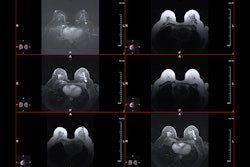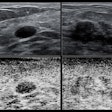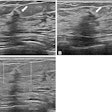Women living in rural areas are more likely to be diagnosed with advanced-stage breast cancer compared to women in urban areas, suggest findings published July 7 in Geriatric Nursing.
Researchers led by Zhaoli Liu, PhD, from the University of Texas at Arlington also found that cancers detected through screening and diagnostic mammography led to lower all-cause and cancer-specific mortality, respectively.
“Healthcare professionals can leverage these findings to promote rural cancer health equity,” Liu and co-authors wrote.
Recent studies suggest that rural Hispanic and non-Hispanic Black women in Texas had the lowest mammography screening rates among all racial groups. They also reported that women in urban areas have higher screening rates and a lower chance of being diagnosed with late-stage cancer.
And while breast cancer mortality rates are higher in rural women compared with women in urban areas, the researchers noted that both screening and diagnostic mammography were either grouped together or undefined in these studies.
Liu and colleagues studied disparities tied to race, ethnicity, and geography in cancer detection modalities. These included screening, diagnostic, and nonmammography methods. They also studied associations between these disparities and cancer stage at diagnosis, all-cause mortality, and cancer-specific mortality. The team studied these outcomes with and without adjusting for covariates such as sociodemographic factors, comorbidities, and tumor characteristics.
Final analysis included cancer data collected between 2010 and 2014 from 21,293 women with an average age of 76.9 years. Most of the women (80%) were non-Hispanic white, one-third had moderately differentiated grades of breast cancer, and 87.2% did not meet the criteria for dual eligibility at enrollment.
The team reported the following:
Cancers detected through screening and diagnostic mammography had 43% (p < 0.0001) and 31% (p < 0.0001) lower all-cause mortality. These modalities also led to lower cancer-specific mortality: 49% (p < 0.0001) and 37% (p < 0.0001) lower compared with nonmammography-detected breast cancers.
Patients from rural areas were 17% more likely to be diagnosed with midstage (p = 0.0023) and advanced stage (p = 0.003) cancers compared with their urban counterparts.
Racial or geographic disparities in cancer detection modalities with associated mortality did not exist after adjusting for covariates.
The study authors highlighted that these results could inspire opportunities for interventions to improve early detection of breast cancer through screening. And these interventions could help identify symptomatic breast cancer through diagnostic mammography, they added.
“Policymakers can more effectively allocate resources to rural areas and underserved populations, ensuring equitable access to healthcare services,” the authors wrote. “Strategies may include expanding mobile and community-based screening programs, broadening the reach of the National Breast and Cervical Cancer Early Detection Program [NBCCEDP], increasing Medicaid coverage and financial assistance for mammograms, and improving transportation access.”
The full study can be found here.




















